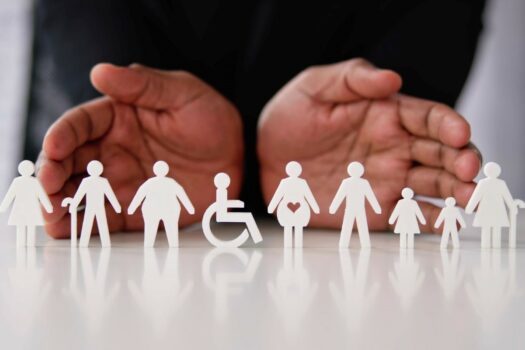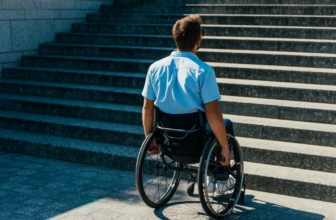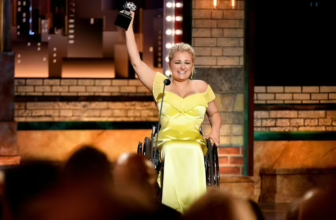In the quest for a society that values every individual, we must confront the challenges faced by people with disabilities in achieving true social inclusion. This article is a call to action, an appeal for awareness, and a blueprint for change. It delves into the systemic barriers, highlights the roles of key players, and underscores the technologies and policies essential for crafting an inclusive community. Our journey towards social inclusion is not just a path of assistance but one of empowerment and respect.
Confronting the Barriers to Social Inclusion
We must confront the multifaceted barriers that impede social inclusion for people with disabilities. Physical obstacles, such as inaccessible buildings and transportation, blatantly deny access to essential community involvement. We cannot overlook societal barriers, including harmful stereotypes and prejudices, which propagate discrimination and loneliness. Communication barriers present another critical challenge; the lack of accessible information formats like sign language or braille alienates those with sensory disabilities. Economic constraints further marginalize disabled people, limiting their participation in societal activities. We must recognize and actively address these barriers to build an equitable and inclusive community.
Championing the Role of Healthcare Workers in Social Integration
Healthcare workers and patient care technicians are unsung heroes in the realm of social integration for people with disabilities. Their role transcends traditional medical care; they are advocates, allies, and often the main link between disabled people and the community. They champion the cause of their patients, helping them navigate social services, connect with community resources, and advocate for necessary accommodations. Their commitment to holistic care underscores their indispensable role in fostering social inclusion.
Technology as a Tool for Inclusion
We live in an era where technology can be the great equalizer in the fight for inclusion. Assistive devices and digital platforms offer unprecedented opportunities for people with disabilities to engage with the world on their own terms. Social media, online communities, and assistive technologies aren’t just conveniences; they are lifelines that provide access to work, education, and social interaction. Embracing these tools is key to building an inclusive society.
Elevating Inclusive Education as a Cornerstone for Social Integration
Inclusive education is not a privilege but a right that lays the foundation for a diverse and empathetic society. Schools that welcome students of all abilities teach more than academics; they teach acceptance and respect for diversity. Educators and administrators must actively cultivate an environment where all children feel valued and included. Addressing any form of exclusion or bullying is non-negotiable. Inclusive education is a societal imperative, nurturing future generations to build a world where diversity is not just accepted but celebrated.
Advocating for Inclusive Employment as a Pathway to Empowerment
Employment is a crucial avenue through which people with disabilities can assert their independence and contribute meaningfully to society. Inclusive workplaces embracing diversity are fulfilling a legal obligation and setting a standard for a progressive, forward-thinking society. Employers have the power and responsibility to create environments where differences are not just accommodated but valued. This requires a proactive approach, including staff training, workspace adaptation, and flexible policies such as welcoming remote work. Inclusive employment is about opportunities, dignity, equality, and empowerment.
The Importance of Accessible Public Spaces
Public spaces should be a reflection of the community’s commitment to inclusivity. Accessibility in parks, buildings, and transportation is a non-negotiable aspect of a civilized society. It’s a statement that every member of the community, regardless of their abilities, is valued and has the right to access and enjoy public amenities. Ensuring accessible public spaces is a fundamental aspect of building an inclusive community.
Advocacy and Policy: Catalysts for Transformative Social Change
Advocacy in the field of disability rights is not just about raising awareness; it's about instigating change. Advocates and policymakers must work hand-in-hand to dismantle the systemic barriers that hinder the full participation of disabled people in society. Policies should be informed by the real experiences of those with disabilities, ensuring that they address actual needs and promote genuine inclusion. Community initiatives play a crucial role in shifting public perception, transforming societies into spaces where diversity is not just tolerated but embraced as a vital aspect of our collective human experience.
Envisioning an Inclusive Future
The path ahead is clear as we journey towards a more inclusive society. We must embrace advocacy, technology, inclusive education, employment opportunities, accessible spaces, and enlightened policies. This article is more than a discussion; it’s a rallying cry for action. An inclusive society benefits everyone, enriching our world with diversity and strength. Committing to breaking down barriers and fostering inclusion is not just a responsibility; it’s an opportunity to build a world that truly values everyone.
How can we make society more inclusive of people with disabilities?
Share your ideas in the comments below.
Coffee junkie. Spoonie. Writer about all things chronic illness and mental health. Friend of animals everywhere.








